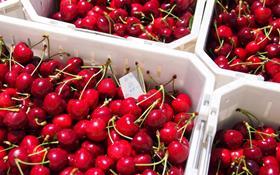
The Chilean cherry industry remains confident of a strong export performance this season despite lower yields due to poor weather conditions.
In its latest crop forecast, the Chilean Cherry Committee projected the total export volume at 14.9m cartons (75,501 tonnes), down 27.7 per cent on last season’s final export figure.
However, Chilean exporters recently visited by Asiafruit were bullish about the quality of this season’s fruit: they expect favourable returns from export markets, with some predicting prices to rise to match the levels of two years ago.
“There is less fruit on the trees in the orchards this season. But when there is less fruit, the quality is better. The fruit is bigger and sweeter, and the quality is more consistent,” explained Alberto Cruz, sales manager of Chilean exporter Gesex.
He told Asiafruit that fruit quality was the key ‘upside’ this season, adding that it would help cherries perform well in export markets. “I think it is possible the market price this year will be as good as two years ago,” he said.
On the packing lines, a lower yield has also had a beneficial effect on the fruit. Andres Ruiz, market manager and cherry product director at Copefrut, told Asiafruit that Chilean cherries would be fresher than ever when they reached consumers in export markets.
He said there was no apparent harvest peak this season, and trucks loaded with fresh cherries from orchards had been coming in at a steady pace. For packers, it meant that the fruit arriving would go into the cold chain immediately and get packed much more quickly.
“Since this season, cherries have been able to enter the cold chain and get sorted and packed inside 18 hours, and no more than 24 hours. It helps a lot to keep the cherries fresh. In previous seasons, this process usually took more than 48 hours,” Ruiz said.
Cristián Tagle, president of the Chilean Cherry Committee and sales director of major grower-packer-shipper San Francisco Lo Garcés, told Asiafruit that maintaining a stable supply and great fruit quality were the most important focus for the industry. He said the whole industry was advancing with new technology and methods to better cope with adverse weather.
China is the largest export market for Chilean cherries, with 80 per cent of the export volume going to the country every year. And Tagle remains bullish about future growth prospects in the world’s most populous nation.
“We are going to reach 30,000ha of cherry plantings, so there is potential for crops of between 40m and 45m cartons in future,” Tagle noted. “There is no doubt that China is the most important market. There is nothing like China. This market is showing us that it has no limits as long as the quality is maintained. So for us the question is how we can pack growing volumes with great quality, because the market is there.”



